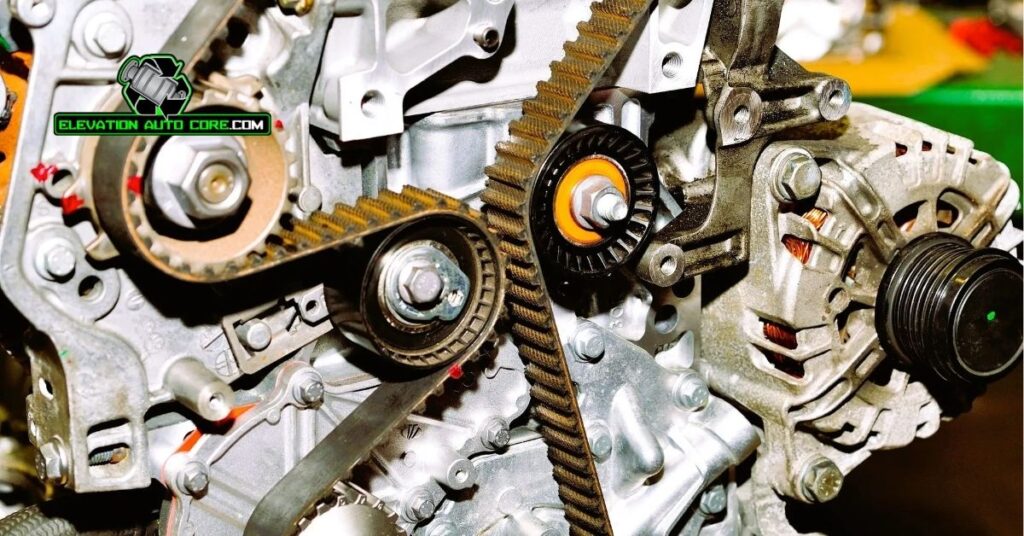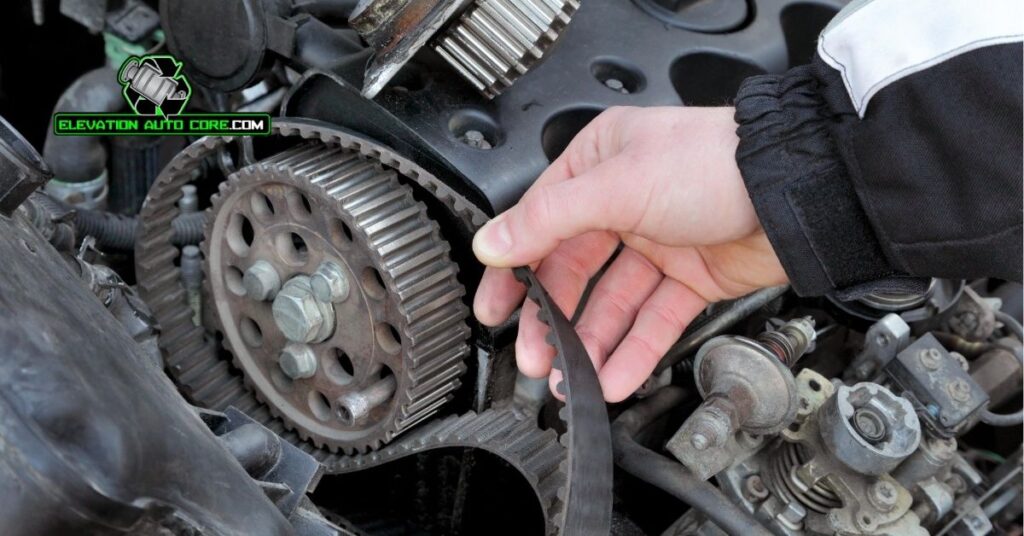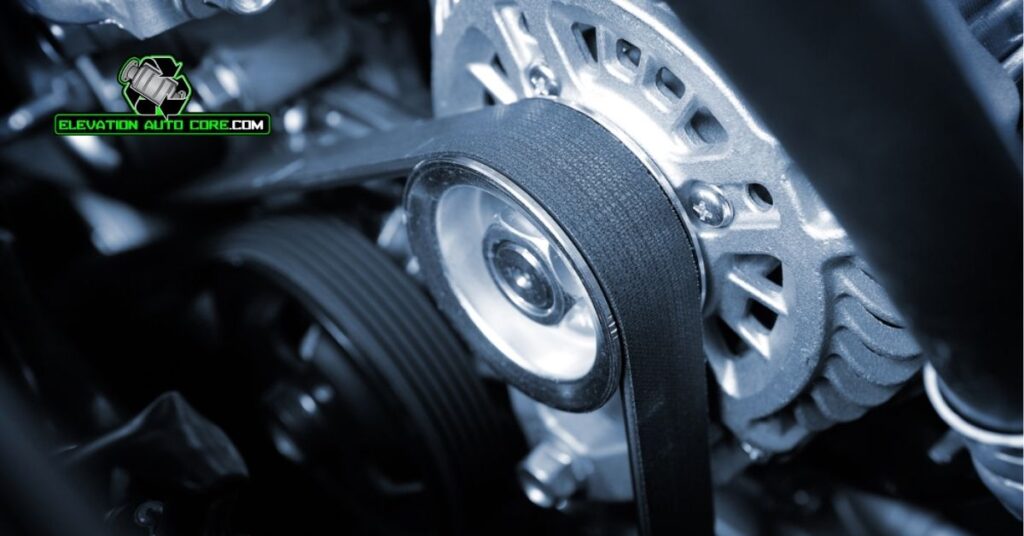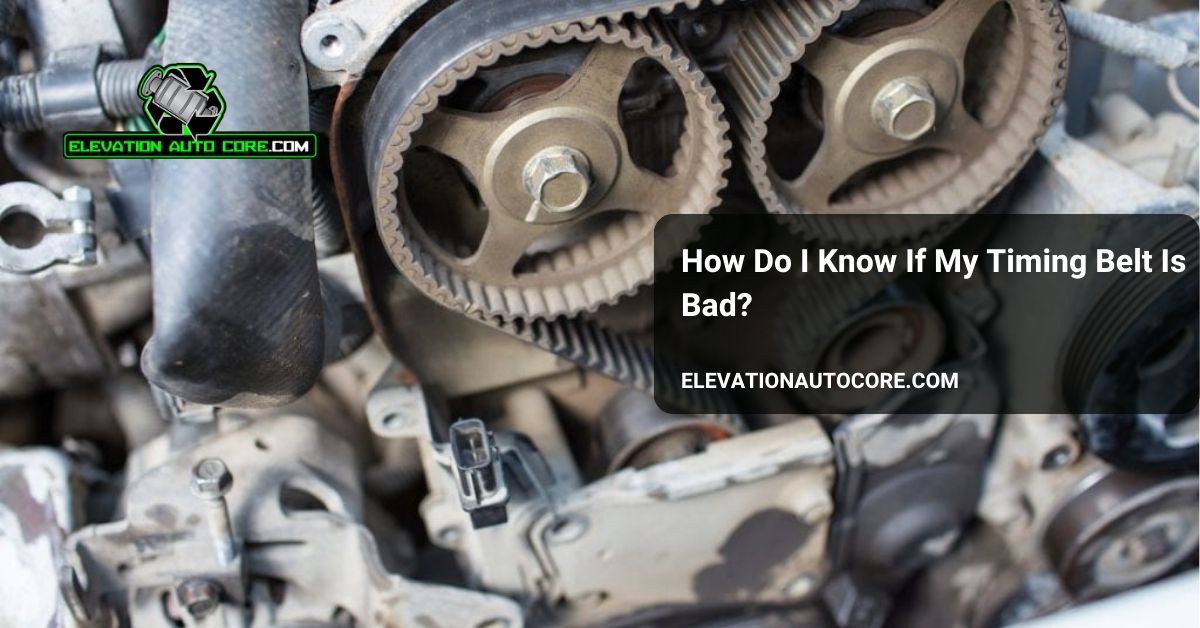How do you know if your timing belt is bad? Ignoring the signs of a failing timing belt could lead to costly engine damage and leave you stranded. From unusual noises to performance issues, recognizing the warning signs early can save you time and money. Keep reading to learn what to watch for and how to protect your vehicle.
What Is A Timing Belt?

A timing belt synchronizes the rotation of the camshaft and crankshaft in your engine. Its main role ensures that the engine’s valves open and close at the correct times during each cylinder’s intake and exhaust strokes. Found inside the engine, it’s typically made of rubber with high-tensile fibers for durability.
Engines that rely on timing belts need precise coordination to avoid valve and piston contact. In many vehicles, the timing belt powers other components, such as the water pump. Without a functioning belt, your engine can’t operate efficiently and may sustain important damage.
Signs Your Timing Belt Is Bad

Recognizing a failing timing belt early can save you from expensive repairs. Pay attention to these signs to ensure your engine remains in good condition.
Unusual Noises
Listen for ticking or clattering sounds coming from the engine. These noises may occur when the timing belt starts wearing out and struggles to maintain proper synchronization of the engine’s components. Any irregular noise from the engine bay warrants immediate inspection.
Engine Misfires
Notice if your engine runs unevenly or delivers inconsistent power. Misfiring happens when the timing belt slips out of place, causing the engine’s cylinder firing sequence to fall out of sync. When left unchecked, frequent misfires can damage internal components.
Trouble Starting The Engine
Watch for difficulty starting your vehicle, especially if it’s happening more often. A worn timing belt may not correctly coordinate the camshaft and crankshaft, preventing the engine from starting smoothly. In severe cases, the engine might fail to start altogether.
Visible Wear And Cracks
Inspect the timing belt for signs of wear or cracks. Over time, the rubber material degrades, leading to fraying, splitting, or uneven surfaces. If you notice these signs during routine checks, replacement is necessary to avoid sudden failure.
Effects Of A Faulty Timing Belt On Your Vehicle
A failing timing belt significantly impacts your vehicle’s overall health. Addressing these issues early minimizes repair costs and prevents further complications.
Engine Performance Issues
You may notice reduced engine efficiency when the timing belt isn’t functioning correctly. Misfiring often occurs as the engine’s timing falls out of sync. Acceleration struggles or loss of power commonly indicate alignment issues caused by the belt. A faulty belt can also lead to stalling, which poses safety risks during driving. If the belt fails completely, the engine might not start at all.
Potential Engine Damage
Serious engine damage arises when the timing belt deteriorates. Valve and piston collisions often occur in interference engines, leading to expensive repairs. If ignored, the belt’s failure also damages critical components like bearings or the camshaft. Over time, broken belts can halt crucial systems, such as the water pump, causing overheating. Unaddressed, a damaged timing belt could result in a complete engine replacement.
How To Confirm Timing Belt Issues

Identifying timing belt problems early helps protect your engine and reduce repair costs. Confirming issues involves checking visible signs and seeking expert evaluation.
Visual Inspection
Look for cracks, fraying, or missing teeth on the timing belt. A worn or damaged belt shows visible deterioration that compromises its function. Inspect for oil leaks around the timing belt cover since oil can damage the belt material. A slack or loose belt may indicate misalignment or wear, requiring immediate replacement.
Examine related components like the tensioner and pulleys for signs of wear. A faulty tensioner may cause noise or irregular movement, leading to belt damage. Check the mileage on your vehicle compared to the manufacturer’s recommended timing belt replacement interval, which is often listed between 60,000 and 100,000 miles.
Professional Diagnosis
Consult a certified mechanic for a detailed assessment. Mechanics use specialized tools to identify hidden wear or issues with the timing system. They can detect subtle symptoms, like uneven belt tension or damage inside the cover, that may not be visible during a casual inspection.
Request a comprehensive evaluation, including related components like the water pump. Experienced technicians can confirm whether timing belt replacement is necessary to prevent further damage.
When To Replace The Timing Belt

Timing belts wear out over time and require timely replacement to avoid engine damage. Staying proactive helps prevent costly repairs and ensures smooth engine functioning.
Recommended Replacement Mileage
Most timing belts need changing between 60,000 and 100,000 miles. Check your vehicle’s owner manual to find the exact range. Some modern timing belts can last longer but still benefit from routine inspections within this interval. High mileage without replacement can increase the risk of belt failure. If you’re unsure about mileage, a mechanic can estimate based on the belt’s condition and vehicle history.
Importance Of Following Manufacturer Guidelines
Vehicle manufacturers provide clear timing belt replacement schedules. These guidelines are designed to protect your engine from risks caused by belt deterioration. Ignoring these recommendations often leads to extensive engine damage in vehicles with interference engines. Besides belt issues, timing components like the tensioner or pulleys may also require replacement during scheduled maintenance. Always rely on the manufacturer’s indications for the safest timing belt upkeep.
Conclusion
Paying attention to your timing belt’s condition is essential for keeping your engine running smoothly and avoiding costly repairs. By staying alert to warning signs and following your vehicle’s maintenance schedule, you can prevent serious damage and extend your car’s lifespan. Don’t hesitate to consult a trusted mechanic if you suspect any issues, as early action can save you time, money, and stress.

